![]() "They
remind me of the whole earth at once."
"They
remind me of the whole earth at once."
Lewis Thomas ![]()
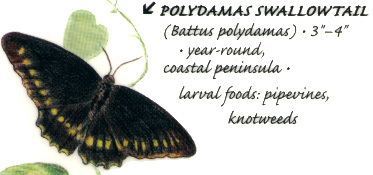
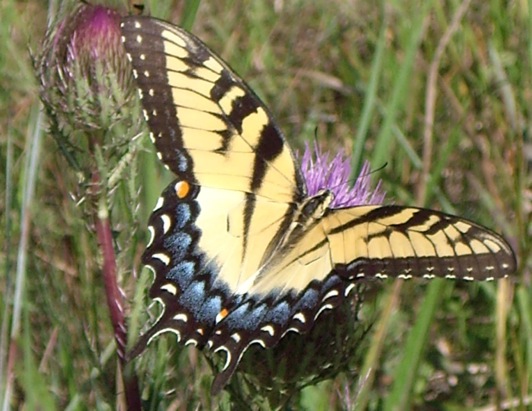
"We tend to think of ourselves as the only wholly unique creations in nature, but it is not so. Uniqueness is so commonplace a property of living things that there is really nothing at all unique about it."
P. 2.
"Selfness, seen thus, is for self-preservation."
"In real life it doesn't seem to work that way. The self-marking invertebrate animals in the sea"was set up in order to permit creatures of one kind to locate others, not for predation but to set up symbiotic households."
p. 3.
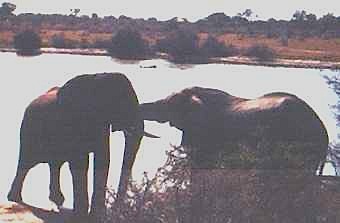
"Fish can tell each other apart as individuals, by the smell of self. So can mice, and here the olfactory discrimination is governed by the same H2 locus which contains the genes for immunologic self-marking."
Anemone and crab
"They sense each other exquisitely, and live together as though made for each other."
"Sometimes there is such a mix-up about selfness that two creatures, each attracted by the molecular configuration of the other, incorporate the two selves to make a single organism."
p. 3.
| "The best story I have ever heard about this is the tale told of the nudibranch and medusa (jellyfish) living in the Bay of Naples. When first observed, the nudibranch, a common sea slug, was found to have a tiny vestigial (no longer functional) parasite, in the form of a jellyfish, permanently affixed to the ventral surface near the mouth. In curiosity to learn how the medusa got there, some marine biologists began searching the local waters for earlier developmental forms, and discovered something amazing. | |
| The attached parasite, although apparently so specialized as to have given up living for itself, can still produce offspring, for they are found in abundance at certain seasons of the year. They drift through the upper water, grow up nicely and astonishingly, and finally become full grown, handsome normal jellyfish. Meanwhile, the snail produces snail larvae, and these too begin to grow normally, but not for long. While still extremely small, they become entrapped in the tentacles of the medusa and then engulfed within the umbrella shaped body. At first glance, you"d believe the medusae are now the predators, paying back for earlier humiliations and the snails the prey. But no. | 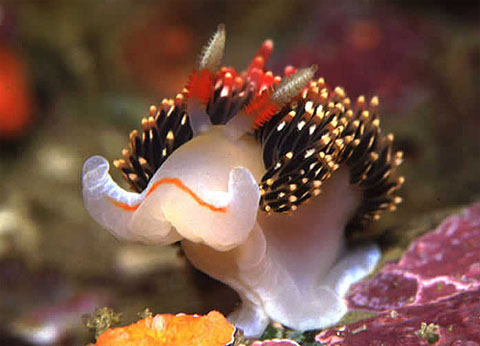 A "full grown nudibranch." |
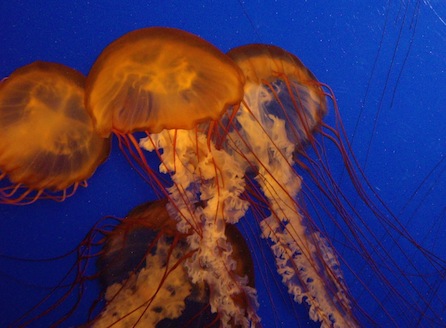 |
The snails, undigested and insatiable, begin to eat, browsing away first at the radial canals, then the borders of the rim, finally the tentacles, until the jellyfish becomes reduced in substance by being eaten while the snail grows correspondingly in size. At the end, the arrangement is back to the first scene, with a full grown nudibranch basking, and nothing left of the jellyfish except the round, successfully edited parasite, safely affixed to the skin near the mouth." pp. 3-4. |
| Medusas' tentacles: predation is never quite this entangled. |
"It is a confusing tale to sort out, and even more confusing to think about."
"marked as selves so they can find each other in waters of the Bay of Naples."
"they cannot live in any other way; they depend for their survival on each other."
"They are not really selves, they are specific others."
p. 4.
Lewis
Thomas, The Medusa and the Snail: More Notes
of a Biology watcher, New York: Viking
Press, 1974, pp. 1-5.
Thoreau on seeds | Margulis on the planet | Gell Mann on complexity
